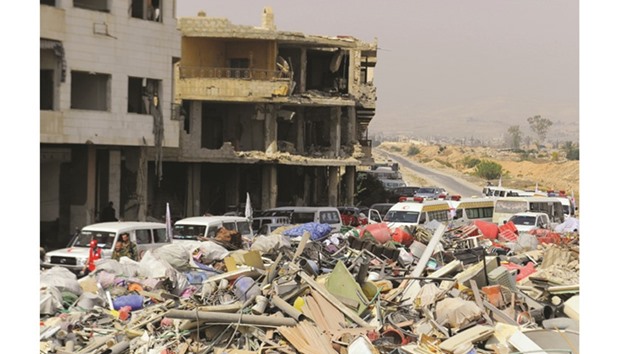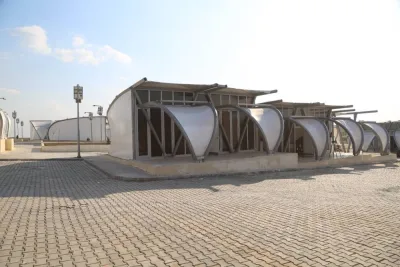Syrian rebels and civilians, many in tears, began yesterday evacuating the Syrian town of Daraya after a four-year army siege, in a blow for the beleaguered opposition.
The evacuation came after a deal struck by President Bashar al-Assad’s government and opposition forces in the town, which is close to the capital Damascus and was one of the first to rise up against the regime.
The first buses carrying evacuating rebels and their families emerged from the devastated town, accompanied by ambulances and Syrian Red Crescent vehicles.
Inside the town, which has been surrounded by loyalist troops since 2012 and suffered constant regime bombardment, tearful residents said final goodbyes, a local rebel fighter said.
“This is the hardest moment, everyone is crying, young and old,” he said, speaking on condition of anonymity.
The deal to evacuate the town was announced on Thursday by Syrian state news agency SANA, which said 700 rebels and their families would leave to rebel-controlled Idlib, and thousands of civilians would be taken to government reception centres.
A Syrian source on the ground said Thursday that the evacuation could take four days to complete and a military source said the army would then enter Daraya.
“The civilians will go to regions under regime control around Damascus, rebels will go to Idlib “or sort out their situation with the regime”, a rebel official said.
Daraya’s local council said on its official Facebook page that civilians would be taken to the government-held town of Hrajela in Western Ghouta, outside the capital.
“From there they will continue to the areas they wish to go to,” it said.
The council said that fighters and their families would be taken to northern Syria, escorted by the Red Crescent.
The United Nations said it was not involved in negotiating the deal, though a UN team was to enter Daraya to identify civilian needs.
UN envoy Staffan de Mistura said it was “tragic that repeated appeals to lift the siege of Daraya and cease the fighting, have never been heeded”.
It was “imperative” that Daraya’s residents be protected and only voluntarily evacuated, the UN envoy said.
“The world is watching,” he said.
Daraya is located just 15 minutes drive from the capital and lies even closer to the government’s vital Mazzeh air base.
It was one of the first towns to erupt in anti-government protests in March 2011.
Rebels accused the government of killing some 500 people in a military operation in Daraya in August 2012.
Yesterday’s evacuation provoked anger and bitterness among opposition supporters, and the local rebel said residents wept as they prepared to leave.
“People are saying goodbye to one another, children are bidding their schools farewell, mothers are saying goodbye to the martyrs in the graves,” he said.
“People are gathering their memories and the few possessions they have left to preserve the memory of the four years of siege, hunger and shelling.”
The rebel fighter said the decision to evacuate the town had been taken because of deteriorating humanitarian conditions.
“The town is no longer inhabitable, it has been completely destroyed,” he said.
Daraya was seen as a symbolic bastion of the uprising that began with peaceful protests against Assad’s government, before degenerating into a war that has killed over 290,000 people.
In four years, just one food aid convoy entered the town, in June, shortly after a single convoy went in carrying medicine.
The arrival of the food aid was followed by heavy regime bombardment that residents said stalled distribution.
According to the United Nations, nearly 600,000 live under siege across Syria, most surrounded by government forces, although rebels and jihadists also use the tactic.
Long government sieges have prompted rebels in several locations to agree evacuation deals with the regime, prompting activists to accuse Damascus of using “starve or surrender” tactics.
Yesterday, the United Nations said only a single full aid convoy had reached besieged areas of Syria in August, denouncing the “wholly unacceptable” level of access.

A Syrian Arab Red Crescent convoy waits next to debris at the entrance of the besieged Damascus suburb of Daraya, before rebels and residents start being evacuated yesterday.


